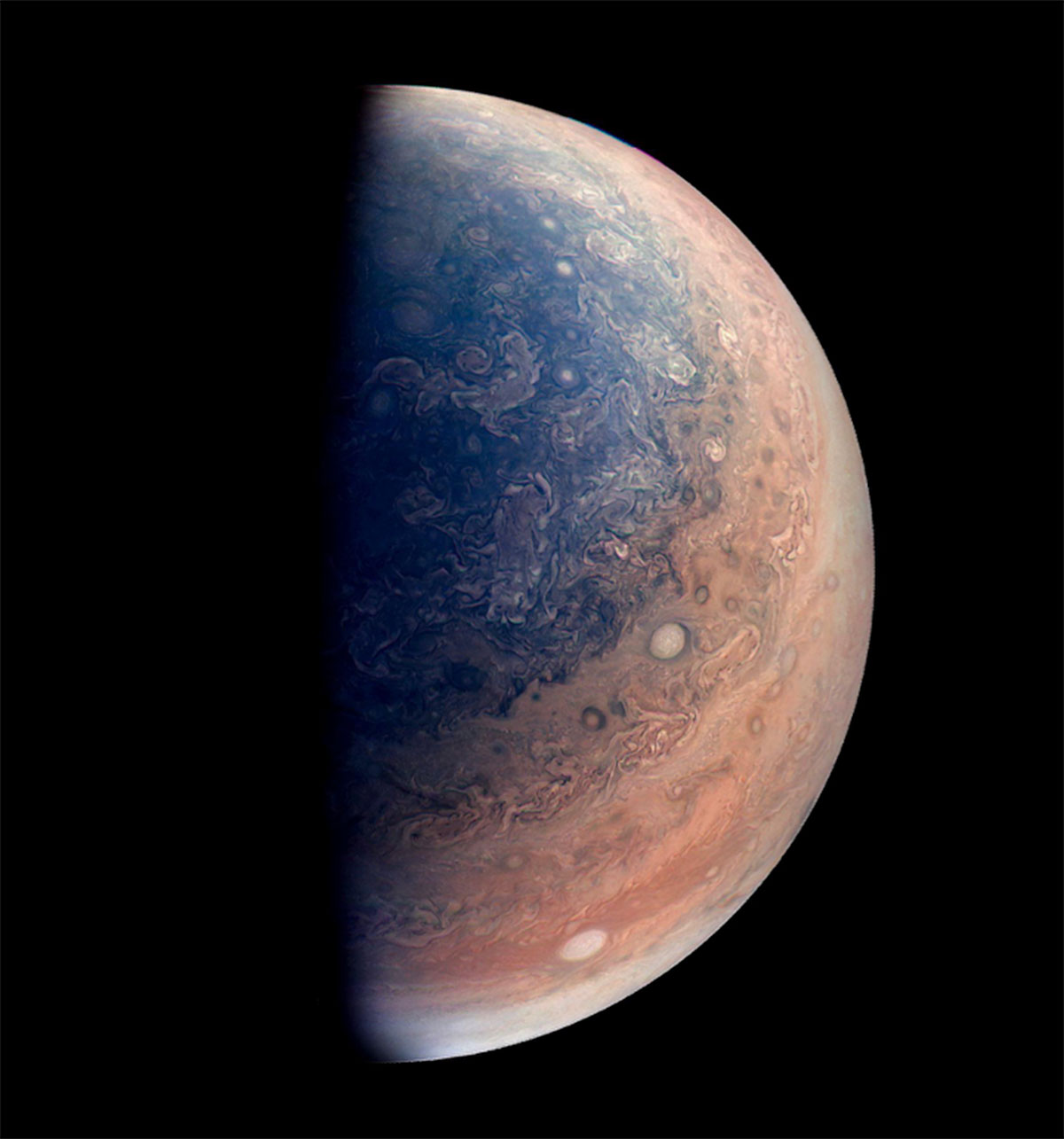Saturn may have 'failed' as a gas giant
The ringed planet is definitely gaseous, but is it really 'giant?'

Saturn is truly massive — nearly 100 times beefier than Earth. Despite its impressive size, the ringed planet is a distant second to Jupiter, which is nearly three times more massive.
In light of this, one astrophysicist suggests that we shouldn't consider Saturn a proper gas giant but rather a planet that tried, but tragically failed, to achieve greatness.
Professional astronomers and the general public alike tend to lump Jupiter and Saturn into the same rough category of gas giant planets. After all, both planets are very large, both have lots of hydrogen and helium gases that make up the bulk of their atmospheres, and the two planets are next to each other in our solar system.
But deeper investigations with NASA's Cassini and Juno spacecraft have revealed significant differences between the worlds — for example, in the amounts of heavier elements buried deep within their bodies. Plus, Jupiter is three times more massive than Saturn — which is, well, kind of a big deal.
Related: Saturn looks incredible in these raw James Webb Space Telescope images (photos)
In a new paper accepted for publication in the journal Astronomy & Astrophysics Letters and available as a preprint, Ravit Helled, an astrophysicist at the Center for Theoretical Astrophysics and Cosmology at the University of Zurich in Switzerland, proposes that our solar system has only one true gas giant: Jupiter. Uranus and Neptune are more properly known as ice giants, since they are made mostly of elements other than hydrogen and helium. As for Saturn, Helled claims that it's not a proper gas giant in its own right but failed to achieve that status.
Growing a giant planet is a tricky business. The early solar system was a complex, evolving place. Initially, there was plenty of material just swirling around the still-growing sun in the center. That material was mostly hydrogen and helium, with a sprinkling of heavier elements. But as the young sun began to heat up, it blew all the hydrogen and helium out of the system.
Breaking space news, the latest updates on rocket launches, skywatching events and more!
This means that planets have a narrow window of opportunity to achieve greatness. The only way to accumulate more mass, especially from hydrogen and helium, is to, well, accumulate more mass. The more massive something is, the more gravitational attraction it will have and the more material will want to join the planetary party. But a planet has to do this quickly, before the sun blows away all the light elements, stopping growth in its tracks.
Previously, researchers assumed that Jupiter and Saturn played similar games — with both planets reaching a certain critical stage needed to quickly vacuum up a tremendous amount of material in a relatively short amount of time — but that somehow, Jupiter got luckier in the process.
But according to Helled, Saturn never had a running chance. The critical threshold where a planet can gain an exponential amount of hydrogen and helium is roughly around 100 times Earth's mass. Jupiter easily beats this, meaning it acquired the lion's share of material in the outer solar system before the sun blew it away.
Uranus and Neptune likewise were far too small to achieve this kind of runaway success. And Saturn sits right at the transition zone. If it had been even a little bigger, it might have competed with Jupiter for the title of the solar system's greatest planet.
Instead, Saturn got stuck. It got large enough that it could pull down a significant amount of hydrogen and helium through sheer force of gravitational will, but not enough that it could kick that process into overdrive and really get going. So for all intents and purposes, Saturn is a failed gas giant, Helled says.
This means that, despite their surface-level similarities, Jupiter and Saturn evolved along completely different tracks — which explains their deeper differences. The distinction in how these two worlds evolved can help us understand not only how our own solar system developed but how star systems across the galaxy came to be.

Paul M. Sutter is a cosmologist at Johns Hopkins University, host of Ask a Spaceman, and author of How to Die in Space.

